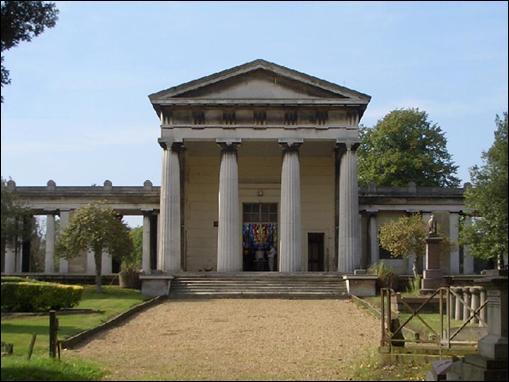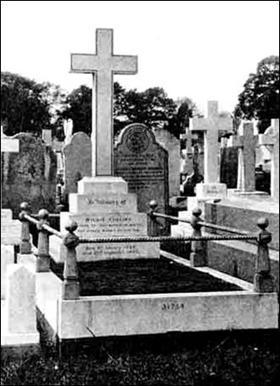Complete Works of Wilkie Collins (2371 page)
Read Complete Works of Wilkie Collins Online
Authors: Wilkie Collins

I regret to have had no opportunity until now (May, 1873) of making the corrections which appear in this impression of my second volume. All the early reprints having been called for before the close of 1872, the only change I at that time found possible was amendment of an error at p. , as to the date of the first performance at Devonshire House, and of a few others of small importance at pp. , , , , , and .
Premising that additional corrections, also unimportant, are now made at pp. , , , , , , , and , I proceed to indicate what may seem to require more detailed mention.
P. . “Covent-garden” is substituted for “Drury-lane.” The
Chronicle
atoned for its present silence by a severe notice of the man’s subsequent appearance at the Haymarket; and of this I am glad to be reminded by Mr. Gruneisen, who wrote the criticism.
. The son of the publican referred to (Mr. Whelpdale of Streatham), pointing out my error in not having made the Duke of Brunswick the defendant, says he was himself a witness in the case, and has had pride in repeating to his own children what the Chief Justice said of his father.
. The “limpet on the rock” and the “green boots” refer to a wonderful piece by Turner in the previous year’s Academy, exhibiting a rock overhanging a magnificent sea, a booted figure appearing on the rock, and at its feet a blotch to represent a limpet: the subject being Napoleon at St. Helena.
P. . “Assumption” is substituted for “Transfiguration.”
. Six words are added to the first note.
, . An error in my former statement of the circumstances of Mr. Fletcher’s death, which I much regret to have made, is now corrected.
. The proper names of the ship and her captain are here given, as the Fantôme, commanded by Sir Frederick (now Vice-Admiral) Nicolson.
. A correspondent familiar with Lausanne informs me that the Castle of Chillon is not visible from Rosemont, and that Dickens in these first days must have mistaken some other object for it. “A long mass of mountain hides Chillon from view, and it only becomes visible when you get about six miles from Lausanne on the Vevay road, when a curve in the road or lake shows it visible behind the bank of mountains.” The error at p. , now corrected, was mine.
. “Clinking,” the right word, replaces “drinking.”
. A passage which stood in the early editions is removed, the portrait which it referred to having been not that of the lady mentioned, but of a relative bearing the same name.
, . I quote a letter to myself from one of the baronet’s family present at the outbreak goodnaturedly exaggerated in Mr. Cerjat’s account to Dickens. “I well remember the dinner at Mr. Cerjat’s alluded to in one of the letters from Lausanne in your Life of Dickens. It was not however our first acquaintance with the ‘distinguished writer,’ as he came with his family to stay at a Pension on the border of the Lake of Geneva where my father and his family were then living, and notwithstanding the gallant captain’s ‘habit’ the families subsequently became very intimate.”
. Lord Vernon is more correctly described as the fifth Baron, who succeeded to the title in 1835 and died in 1866 in his 64th year.
. The distance of Mont Blanc from the Neuchâtel road is now properly given as sixty not six miles.
P. , second line from bottom. Not “subsequent” but “modified” is the proper word.
. In mentioning the painters who took an interest in the Guild scheme I omitted the distinguished name of Mr. E. M. Ward, R.A., by whom an admirable design, taken from Defoe’s life, was drawn for the card of membership.
, . In supposing that the Child’s Dream of a Star was not among Dickens’s Reprinted Pieces, I fell into an error, which is here corrected.
. I did not mean to imply that Lady Graham was herself a Sheridan. She was only connected with the family she so well “represented” by being the sister of the lady whom Tom Sheridan married.
The incident at Mr. Hone’s funeral quoted at pp. — from a letter to Mr. Felton written by Dickens shortly after the occurrence (2nd of March, 1843), and published, a year before my volume, in Mr. Field’s
Yesterdays with Authors
(pp. -), has elicited from the “Independent clergyman” referred to a counter statement of the alleged facts, of which I here present an abridgement, omitting nothing that is in any way material. “Though it is thirty years since . . . several who were present survive to this day, and have a distinct recollection of all that occurred. One of these is the writer of this article — another, the Rev. Joshua Harrison. . . . The Independent clergyman never wore bands, and had no Bible under his arm. . . . An account of Mr. Hone had appeared in some of the newspapers, containing an offensive paragraph to the effect that one ‘speculation’ having failed, Mr. Hone was disposed, and persuaded by the Independent clergyman, to try another, that other being ‘to try his powers in the pulpit.’ This was felt by the family to be an insult alike to the living and the dead. . . . Mr. Harrison’s account is, that the Independent clergyman was observed speaking to Miss Hone about something apparently annoying to both, and that, turning to Mr. Cruikshank, he said ‘Have you seen the sketch of Mr. Hone’s life in the
Herald?
’ Mr. C. replied ‘Yes.’ ‘Don’t you think it very discreditable? It is a gross reflection on our poor friend, as if he would use the most sacred things merely for a piece of bread; and it is a libel on me and the denomination I belong to, as if we could be parties to such a proceeding.’ Mr. C. said in reply, ‘I know something of the article, but what you complain of was not in it originally — it was an addition by another hand.’ Mr. C. afterwards stated that he wrote the article, ‘but
not
the offensive paragraph.’ The vulgar nonsense put into the mouth of the clergyman by Mr. Dickens was wound up, it is said, by ‘Let us pray’ . . . but this
cannot
be true; and for this reason, the conversation with Mr. Cruikshank took place before the domestic service, and that service, according to Nonconformist custom, is always begun by reading an appropriate passage of Scripture. . . . Mr. Dickens says that while they were kneeling at prayer Mr. Cruikshank whispered to him what he relates. Mr. C. denies it; and I believe him. . . . In addition to the improbability, one of the company remembers that Mr. Dickens and Mr. Cruikshank did not sit together, and could not have knelt side by side.” The reader must be left to judge between what is said of the incident in the text and these recollections of it after thirty years.
At the close of the corrections to the first volume, prefixed to the second, the intention was expressed to advert at the end of the work to information, not in correction but in illustration of my text, forwarded by obliging correspondents who had been scholars at the Wellington House Academy (i. ). But inexorable limits of space prevent, for the present, a fulfilment of this intention.
J. F.
Palace Gate House, Kensington,
22nd of January 1874
.

Kensal Green Cemetery, London—Collins’ final resting place

Collins’ grave